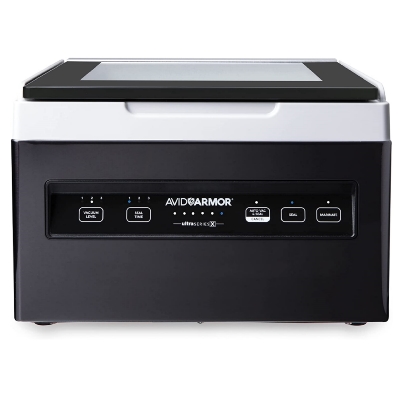 Vacuum sealer machines have revolutionized the way we store food, extending their shelf life and ensuring freshness. But have you ever wondered about how vacuum sealers work? In this article, we’ll explain their design that makes vacuum sealing possible.
Vacuum sealer machines have revolutionized the way we store food, extending their shelf life and ensuring freshness. But have you ever wondered about how vacuum sealers work? In this article, we’ll explain their design that makes vacuum sealing possible.
Whether you’re a curious consumer or a gadget enthusiast, you will learn something new about how vacuum sealer machines operate.
Components of a Vacuum Sealer
A vacuum sealer usually has six important parts:
- Suction Pump: At the heart of a vacuum sealer is a suction pump, which is responsible for creating a vacuum inside the bag. The suction pump creates a difference in pressure by removing air from the inside of the bag. Chamber vacuum sealers generally have a more powerful vacuum pump compared to external vacuum sealers since they need to create a vacuum in the whole chamber.
- Sealing Bar and Heat Element: A very crucial component of the vacuum sealer is the sealing bar with a heating element (usually a resistive wire). This bar is what physically touches with the open end of the bag. The bar heats up when to seal the bag.
- Pressure Sensors or Timers: To know when the vacuum is sufficient, some vacuum sealers use pressure sensors that can detect the amount of pressure inside the bag. Simpler machines might just use timers, allowing the suction to continue for a preset time, assuming that the vacuum is enough and it’s time to continue with the sealing.
- Control Electronics: This part of the machine, often consisting of microcontrollers, controls the sequence of events. They initiate the suction ( detect press of start button), monitor pressure (if the machine has sensors), control the heating element, and stop the process once it’s complete. It will also monitor other sensors such as sensors for detecting the moisture.
- Gaskets and Seals: For the vacuum sealer to work properly, it must be able to seal the opening where the bag is inserted during the vacuuming process. This is usually achieved through rubber gaskets and seals that ensure no air enters the chamber during the sealing process.
- Ventilation and Cooling System: The heating element and suction pump can generate heat during operation, so most vacuum sealers have some form of ventilation or cooling system to prevent overheating. Machines with good cooling systems usually allow for rapid sealing or require very little cooling time between seals.
Operation
Here is simplified operation sequence of a vacuum sealing machine.
- When you insert the open end of the bag into the machine and start the process, the control circuitry activates the suction pump to pump air out to create a vacuum inside the bag. In chamber vacuum sealers, you place the entire bag with the item inside a chamber and the machine removes air from the entire chamber.
- While the pump removes air from the bag, and the pressure sensors or timers monitor the progress.
- Once the desired vacuum level is achieved or a preset time has passed, the control board activates the heating element.
- The sealing bar, which has been pressed against the bag, heats up, melting the plastic and creating an airtight seal. Some machines have two heating elements in parallel to create a double seal for a more secure seal.
- After a short period, the heat is turned off. The vacuum-sealed bag can now be removed. If the machine is a chamber vacuum sealer, once the bag is sealed, the vacuum is released, and the chamber returns to normal atmospheric pressure.
- The machine will be ready for the next vacuuming once the heating element and pump have cooled down.


